Sailing the open ocean has always been a powerful draw for those with a sense of adventure. The vastness, the horizon that seems to stretch forever—it’s an experience unlike any other. But beyond the allure and adventure lies a critical element that many might not immediately consider: psychological safety.
For sailors, understanding the depths of this psychological aspect is just as crucial as understanding the technical skills required to navigate at sea. The sea, while majestic, is unpredictable and often challenges one’s mental resilience. This is where the study of psychology in maritime contexts comes into play, providing insight into how sailors can keep their minds as well-prepared as their equipment.
Mental well-being at sea isn’t just a nice-to-have—it’s a necessity. It affects everything from decision-making to teamwork and overall safety. Sailing can lead to extended periods away from land, home, and family, which can have significant psychological effects. Recognizing the need to support sailors’ mental health can greatly enhance not only their individual experience but the collective safety and efficiency of the crew.
In this exploration of safety at sea, we’ll delve into how the intricate tapestry of psychological factors at play affects our sailors. Understanding these aspects helps us appreciate why prioritizing mental health and safety paves the way for a safer and more fulfilling adventure on the high seas.
Navigating Challenges: The Psychological Impacts of Isolation
Being at sea often means getting cozy with solitude. For sailors, long stretches of time away from land can bring about feelings of isolation and loneliness. Even with a crew nearby, the vast ocean can make one feel isolated. This is where understanding how to cope becomes valuable.
The effects of isolation start to show when sailors face extended periods away from family and familiar comforts. It’s not uncommon for them to feel a strong longing for home or to experience a sense of disconnection from life back on land. Recognizing these feelings is the first step in managing them.
One practical approach to combating isolation is fostering a supportive social environment on board. Building strong friendships and camaraderie with fellow crew members can create a mini-community that helps buffer the impact of being away. Regular video calls and using digital communication tools can also play a big role in staying connected with loved ones.
Additionally, maintaining routines and engaging in hobbies can make a significant difference. Activities like reading, exercising, and even learning new skills can serve as a distraction and provide a sense of normalcy.
It’s also essential to communicate openly about these challenges, both during and after the voyage. Having regular check-ins with a mentor or a mental health professional can guide sailors in managing isolation, ensuring they stay mentally healthy throughout their time at sea. By using these strategies, sailors can tackle the mental toll of isolation and continue enjoying the adventure the sea offers.
Stressors at Sea: Identifying and Mitigating Risks
Life at sea comes with its own unique set of challenges, many of which can contribute to stress. Whether it’s dealing with unpredictable weather, the demands of the job, or maintaining relationships while away, these stressors can mount quickly. Identifying them early is key to keeping mental health in check.
Understanding the common stressors is the first step. These might include the constant noise of the ship’s machinery, lack of privacy, and the pressure to perform under physically demanding conditions. Each crew member might react differently, so staying aware of how these factors affect you personally is important.
One effective way to manage stress is by practicing mindfulness. Taking a few minutes each day to be present and mindful can provide a mental reset. Techniques such as deep breathing or meditation can be handy tools to have in your arsenal.
Another good approach is to make use of the support systems available at sea. Many ships now include mental health resources like counselors who are available online, providing sailors with a professional to turn to when things get tough. Talking to someone who understands the unique demands of maritime life can provide comfort and practical coping strategies.
Recognizing the cycle of stress and learning coping techniques can transform these challenges into opportunities for growth. By acknowledging stress and addressing it head-on, sailors can develop a resilience that enhances both their mental health and their performance on the job.
Training for Resilience: Preparing Sailors Mentally
Sailors face some of the harshest environments known to humankind, so building resilience is a crucial part of their training. The unpredictability of the ocean means that mental and emotional preparation is just as vital as physical preparedness.
Psychological resilience isn’t about never having a bad day; it’s about having the strength to bounce back when things get tough. There are plenty of techniques that aim to strengthen this resilience. For instance, visualization exercises where sailors imagine challenging scenarios and plan their responses can be very effective. These help prepare their minds to react calmly and efficiently in real situations.
Physical fitness also plays a big role in mental resilience. Regular exercise can reduce stress, boost mood, and increase overall energy levels. Simple routines like daily stretching or yoga can help keep both the body and mind agile.
Group exercises focused on teamwork and problem-solving also contribute significantly to building mental toughness. By simulating stressful scenarios in controlled environments, sailors can practice effective communication and collaboration, skills that are invaluable during real voyages.
Learning from those who’ve mastered these skills offers real insights. Many sailors have stories of overcoming adversity, showing us that resilience can indeed be fostered through practice and preparation. Preparing mentally by engaging in these exercises not only enhances a sailor’s ability to handle stress but also enriches the overall experience at sea.
The Role of Leadership: Creating Safe and Supportive Environments
Leadership on a ship isn’t just about giving orders—it’s about creating an environment where every crew member feels safe and valued. Effective leaders can make a world of difference in how a crew handles the challenges and stresses of life at sea.
Trust between the crew and their leaders is foundational. This trust grows when leaders show transparency and involve their team in decision-making processes. By creating a culture where everyone feels heard, leaders encourage open communication, which is crucial for maintaining morale and addressing potential issues before they escalate.
Supporting mental health involves more than just addressing issues as they arise. Proactive leaders check in regularly with their crew, offering support and guidance. They recognize when someone might be struggling and know when to step in or suggest resources for professional help.
Empathy and understanding are key qualities in any leader. When crew members see that their leader genuinely cares about their well-being, it fosters a strong sense of loyalty and commitment. Sharing personal experiences or struggles can also help leaders connect with their crew on a deeper level, showing that they, too, are human.
Real-life examples often provide the best lessons. Stories of great ship captains demonstrate how strong leadership positively affects the crew’s mental health and overall effectiveness. These leaders adapt their style to meet the needs of their team, especially during high-pressure situations.
Good leadership isn’t about maintaining authority. It’s about building a community aboard that supports and uplifts one another. By prioritizing the mental health of their crew alongside safety and operational tasks, leaders pave the way for a harmonious and resilient ship environment.
Integrating Technology: Innovations in Mental Health Support at Sea
In the modern age, technology is revolutionizing how sailors maintain their mental health while out at sea. With the advent of digital tools, sailors now have more resources at their fingertips, providing newfound support for managing the stresses of maritime life.
One significant development is the use of mobile apps and online platforms designed specifically for mental health. These tools offer features like relaxation exercises, mindfulness activities, and even virtual counseling sessions. Being able to access these resources anytime can be a game-changer for sailors who might need support outside of traditional hours.
Ship-to-shore communication systems are also enhancing support. Improved satellite technology allows for clearer and more reliable connections back home, making it easier for sailors to maintain relationships and receive support from family and friends during their time at sea.
The use of virtual reality (VR) for training and stress relief is another innovative approach. VR can simulate calming environments or guide sailors through mental health exercises, effectively providing a temporary escape from the pressing environment of a ship.
Of course, integrating these technologies comes with its own set of challenges, such as ensuring consistent access to reliable internet or overcoming resistance to new methods of handling mental health. Over time, as these technologies become more commonplace, they hold great potential to improve the quality of life for mariners.
By embracing technology and the benefits it can bring, the maritime industry is taking important steps forward. These innovations don’t just help maintain mental health; they contribute to creating a safer, more supportive environment on ships, ultimately enhancing the overall well-being of those at sea.
Emergency Situations: Psychological Preparation and Response
Emergencies at sea are often high-stakes and demand swift, clear-headed responses. Preparing mentally for these situations can make a significant difference in outcomes. Sailors who have practiced handling crisis scenarios generally cope better under pressure, which promotes greater safety for everyone on board.
One of the key strategies is regular emergency drills. These help confirm that everyone knows their role when the unexpected happens. The repeated practice of how to respond can foster a sense of calm and assurance, ingraining responses so they come naturally during an actual event.
It’s also crucial to focus on psychological readiness. Techniques such as controlled breathing, visualization, and grounding exercises can help maintain mental clarity when adrenaline is running high. Leaders play a vital role here, too, as their calm demeanor sets the tone for the rest of the crew.
Communication is integral during emergencies. Maintaining open channels helps ensure that everyone knows what’s happening and what actions to take next. Clear, concise communication can prevent panic and reduce misinformation, promoting a structured and effective response.
After a crisis, the psychological healing process is just as important. Debriefing with the crew allows for emotional processing and reflection on what occurred. This process not only aids recovery but also helps identify areas for improvement in preparation and response strategies.
Peer support systems can also provide a great deal of comfort following a traumatic event. Sharing experiences and listening to each other provides emotional relief and helps solidify the team’s resilience. Recognizing and acknowledging the emotional impact of emergencies ensures long-term mental well-being for everyone involved.
Conclusion: Building a Secure and Supportive Maritime Community
Sailing offers incredible experiences, but it also demands robust mental fortitude. As we’ve explored, mental health and psychological safety are vital components of life at sea, influencing everything from individual well-being to the overall safety of a vessel.
Creating a community focused on mental health is a collective effort. It involves each sailor and leader prioritizing open communication, forming supportive networks, and embracing the latest technological advancements. Every action, from routine emergency drills to fostering interconnected relationships within the crew, contributes to a healthier ship environment.
The maritime industry has started recognizing the need for comprehensive mental health strategies, but there’s always room to expand these initiatives. By prioritizing psychological resilience and support, we can craft a maritime culture that genuinely values its people, enhancing both personal experiences and operational efficiency.
The future of maritime mental health looks promising as more resources and awareness emerge. Progress relies on continued education, empathy, and technological integration. Together, we can ensure that the oceans remain a place of adventure and opportunity, underpinned by a solid foundation of psychological safety and community support.
As an Amazon Associate I earn from qualifying purchases.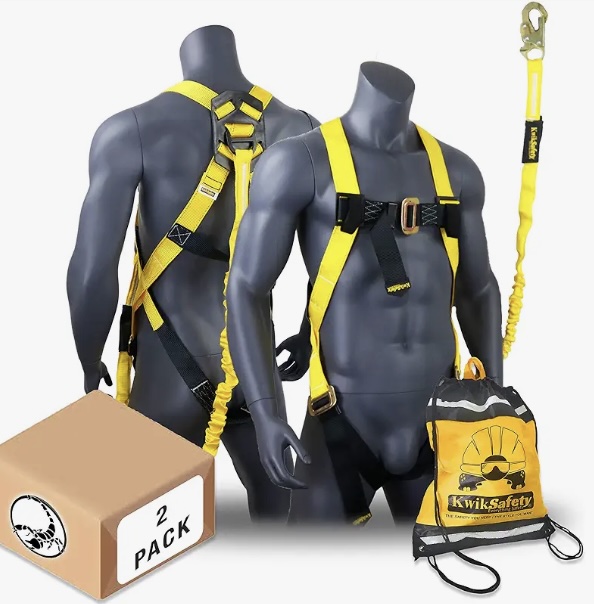


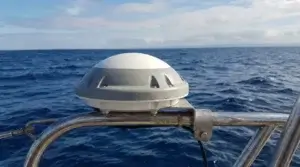
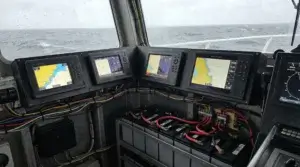
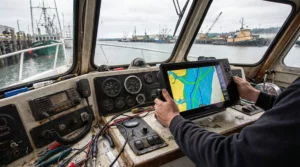
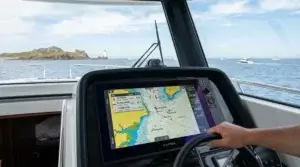
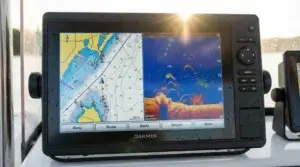
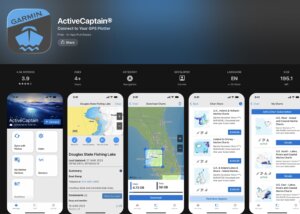

This article really opened my eyes to the depth of psychological resilience required for life at sea. I appreciated how thoroughly you explored the layers of emotional and mental well-being, from managing isolation and stress to the vital role of leadership and emerging technology. It’s so true that mental preparedness is every bit as important as physical readiness when facing the unpredictability of the ocean.
While I don’t have any experience with sailing, I’ve dealt with long stretches of isolation due to chronic illness—and that part of the article really struck a chord with me. Your point about the camaraderie of the crew forming a mini-community truly hit home. Having a support system, even in a small environment, makes such a difference in mental health and overall morale.
I also thought the mention of using VR to simulate calming environments was incredibly innovative. That could really help break up the monotony or tension of long voyages. Have you come across any specific apps or digital tools that are becoming popular in the maritime world?
This was such an insightful read, and I think these kinds of discussions are so important—not just for the sailing community but for anyone working in high-stress or isolated conditions. Thank you for shining a light on the mental side of safety.
Thank you so much for your kind words and for sharing your personal experience—your perspective adds such a meaningful layer to this conversation. You’re absolutely right: whether at sea or on land, navigating long periods of isolation takes a deep reservoir of psychological resilience, and having even a small, supportive community can make all the difference.
I’m really glad the section on VR stood out to you! There’s growing interest in digital wellness tools in the maritime world—apps like Headspace and Calm are being used more frequently, especially when paired with VR headsets to create immersive, calming experiences. Some shipping companies are even exploring custom-built platforms that blend mindfulness with training modules, designed specifically for seafarers. It’s still an emerging field, but the early feedback is very promising.
I agree entirely—these discussions go far beyond sailing. Isolation, stress, and mental wellness affect so many people in high-pressure or remote environments. The more we normalize these conversations, the better equipped we all are to support each other.
Thanks again for engaging so thoughtfully—it truly means a lot.
Hey, this article is very comprehensive on the topic, even though I’m not a sailor at the moment, and never planning to be one in the future unless fate has its own plans for me. However, as a nature lover, I would love to use a GPS system, and in fact, my new smartwatch has one.
Do you suggest a GPS device instead of my watch? I wonder if my watch will also work when I’m outside town especially in South Sudan where the network coverage is still a problem. Do you have suggestions for such a customer, a user of my kind/type, living in a different world than yours
John
Hi John,
Thanks for sharing your thoughts — I love how you put it: “unless fate has its own plans for me” sounds like the beginning of an adventure novel!
Your smartwatch GPS will still work outside of town, even in places with poor or no mobile network coverage — as long as it has a built-in GPS chip. GPS signals come from satellites, not from cell towers, so they work globally. The only thing you might lose without network coverage is some “assisted GPS” features, which can make location locking faster, but the core navigation still works.
That said, if you’re going to be in very remote areas (especially in places like South Sudan where terrain can be challenging), a dedicated handheld GPS device might be worth considering. These devices often have stronger antennas, longer battery life, and offline topographic maps designed for hiking or exploring. Some also allow you to download detailed maps in advance, which can be a lifesaver if you’re off-grid for days.
For someone like you — a nature lover rather than a sailor — I’d suggest:
Check if your watch supports offline maps and download them before trips.
Carry a backup battery if you’re relying on your watch for long hikes.
If you want extra reliability, look at handheld GPS models from brands like Garmin, which are made for rugged, offline use.
In short, your smartwatch can absolutely handle most outdoor adventures, but a dedicated GPS becomes valuable when reliability and battery life are critical.
Andrejs